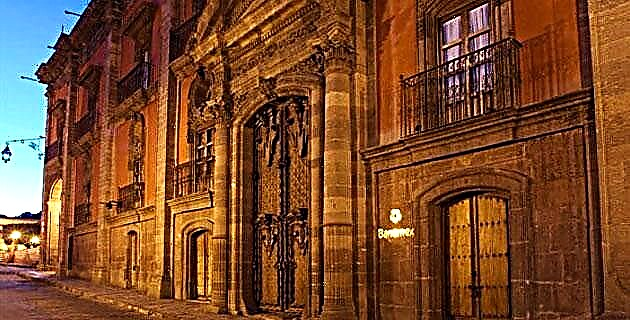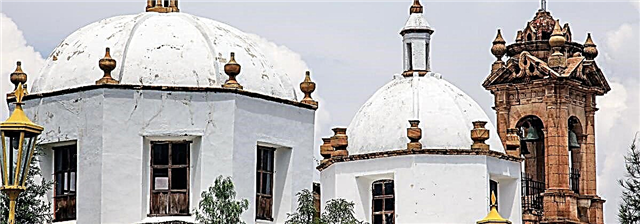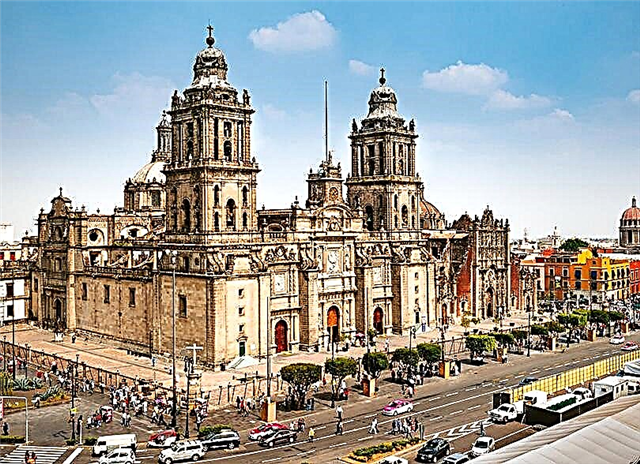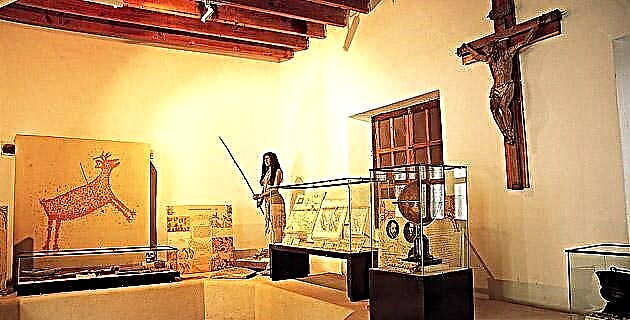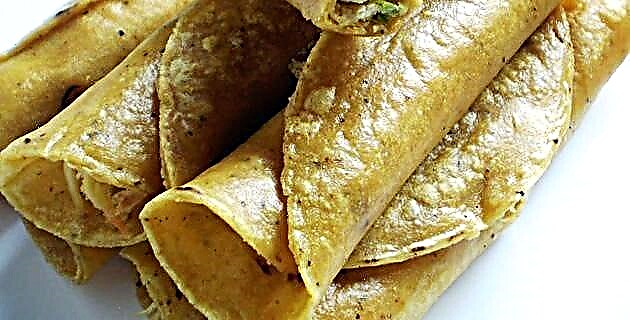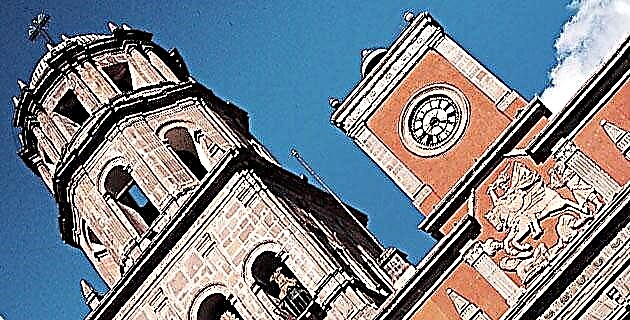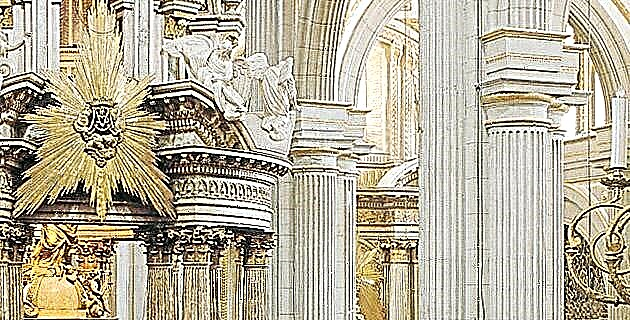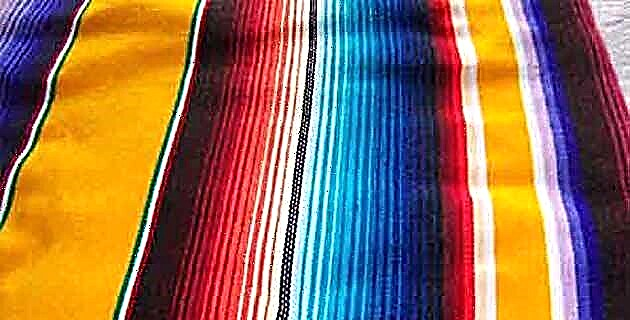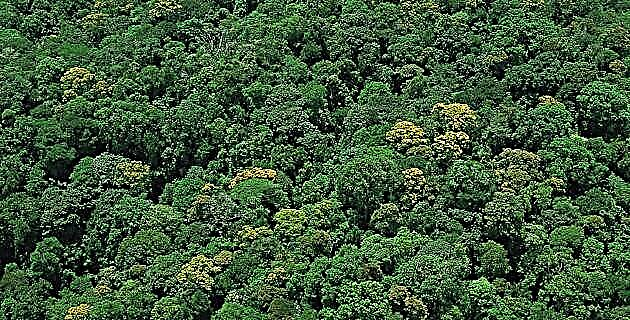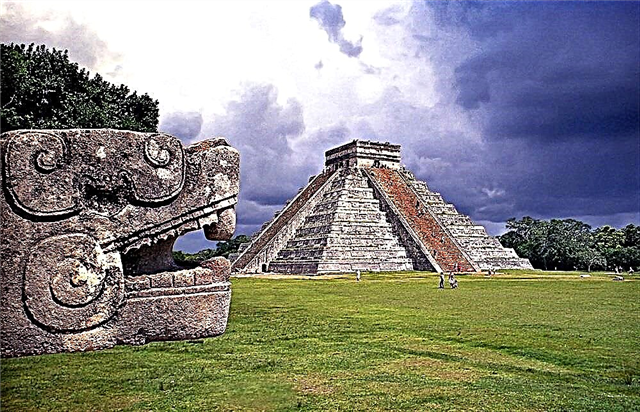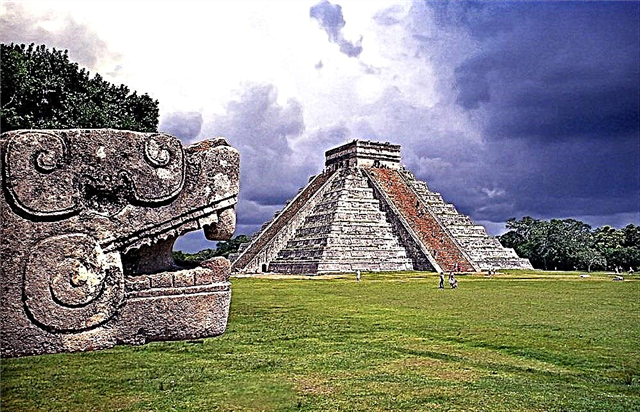
Chichén Itzá, in the Yucatecan municipality of Tinum, is a place to immerse yourself in the origins of Mexican culture.
The majesty of the buildings and the scientific symbolisms behind the buildings at Chichén Itzá are amazing.
We hope that this guide contains everything you need so that you do not miss any important place on your visit to Chichén Itzá.
1. What is Chichén Itzá?
Chichén Itzá is one of the main archaeological sites in Mexico and Mesoamerica. This city and ceremonial center was built by the Mayans in the Yucatan peninsula, being in the current municipality of Tinum, in the state of Yucatan.
The buildings that are preserved belong to the so-called Late Classic and Early Post Classic periods, which span from the 9th to the 12th century.
Due to its cultural importance, Chichén Itzá was declared by the UN as a Cultural Heritage of Humanity and was included among the new Seven Wonders of the Modern World, the only place in Central and North America on the prestigious list.
2. How do I get to Chichén Itzá?
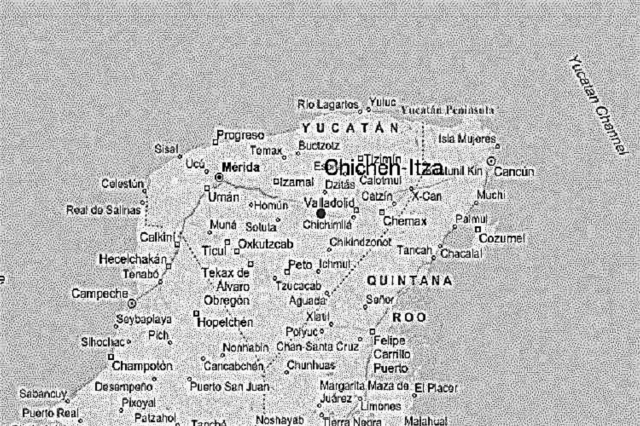
The archaeological site is located almost 1,500 kilometers east of Mexico City. The most comfortable way to go to Chichén Itzá from the Mexican capital is by taking a flight to Mérida, the capital of Yucatán, or to Cancun.
Cancun is 190 kilometers from the site and Mérida 120. Direct local flights depart from both cities to Chichén Itzá in small aircraft and bus lines that stop in Pisté, 15 kilometers from the site. From Cancun, the flight is about an hour.
3. What does Chichén Itzá mean?
In the Mayan language, "Chichén Itzá" means "mouth of the well of the Itzaes", referring to a cenote sacred to the pre-Hispanic civilization and to the Itzae people.
This cenote was revered as the entrance to the underworld, the home of the gods and the dead in mythology, particularly, in the case of this body of water, the deities related to the phenomenon of rain. Another version indicates that "Itzá" could mean "haunted waters"
4. Who were the Itzaes?
The Itzas or Itzaes were an ancient Mayan civilization that settled in the Yucatán peninsula approximately 1,700 years ago, that is, about 5 centuries before the buildings of Chichén Itzá that are preserved were raised.
The so-called "wise initiates" are descendants of the Chanes, the first Mayan people of Yucatán and it is believed that they came from the Petén area, in the current Republic of Guatemala.
5. How is the climate of Chichén Itzá?
The climate of Chichén Itzá is warm of the sub-humid type. There are rains in summer and temperatures are considerably higher than those recorded in the beach areas of the Yucatan peninsula, with the thermometers reading an average of 27 ° C.
The average level of rainfall is around 1,150 mm.
6. How tall is Chichén Itzá?
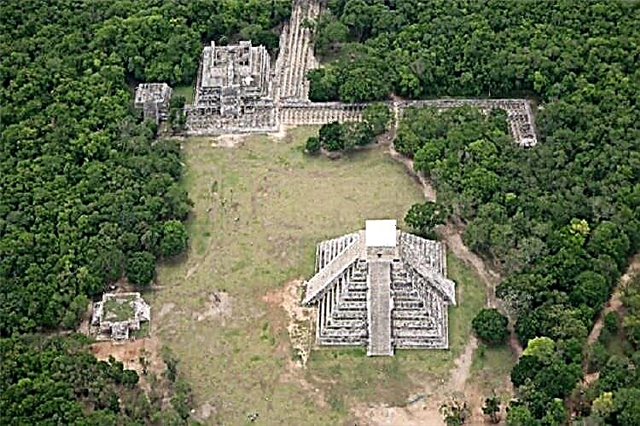
The public access area of the archaeological site is 47 hectares (470 thousand square meters), although all the monumental buildings are in the protected area, whose extension is about 15 square kilometers. This area is called a «protection polygon»
It is usual to find in Chichén Itzá some buildings without allowed access. This is because they are not suitable for safety reasons, mainly because mass tourism deteriorates the site and it is necessary to periodically evaluate the conditions.
Restricted places are always marked and protected by barriers, so it is essential to attend to these limitations, which are applied to preserve this valuable heritage for future generations.
7. How did it become the first center of power in Yucatán?
The pre-Columbian city of Chichén Itzá is believed to have been founded in the first quarter of the 6th century, during the so-called "first descent from the East" by the Chanes.
On their journey from east to west, the Chanes founded other important settlements, such as Izamal, Ek Balam, Motul and T'Hó, but Chichén Itzá managed to impose the preeminence of the cult of the god Kukulkán and of the Sacred Cenote, which is why it became the main center of power.
8. How did Chichén Itzá decline?
Chichén Itzá maintained its heyday until approximately the beginning of the 13th century, when they came into conflict with other rulers of the Mayapán League, a confederation of Mayan peoples who fought frequently, including those of Uxmal, Itzamal and other lordships.
When the Spanish arrived in Yucatán in the 16th century, Chichén Itzá retained its value as a sacred pilgrimage site, but its political power had waned.
9. Who were the first Spaniards to arrive at Chichén Itzá?
The conquerors of Yucatán were the Montejo, three Spaniards named Francisco, father, son and nephew.
The leader was Francisco de Montejo Sr., who accompanied Cortés on his expedition and on the founding of Veracruz, the starting point of the conquest of Mexico.
Francisco de Montejo and his forces conquered Yucatán and were impressed by Chichén Itzá, a city that they considered as the possible capital of the new province.
10. How is the whole integrated in a general way?
Chichén Itzá is an architectural complex formed by a main temple, houses, squares, an observatory, fields for the ball game, a Sacred Cenote and other monuments.
The ensemble shows influences from the styles developed by the civilizations that settled in the Mexican highlands.
Likewise, characteristic features of the Puuc architectural style are observed, which was practiced in the southwest of Yucatán and in the northeast of Campeche.
11. What is the main monument of Chichén Itzá?
The Temple or Pyramid of Kukulkán is the most important building of the site and one of the most relevant of the Mayan culture.
It is a pyramid with four facades and nine levels, with a central staircase on each front and is topped by a temple.
It was built during the 12th century and the Spanish called it El Castillo to associate it architecturally with a building model they already knew. The pyramid has a height of 30 meters and was dedicated to the god Kukulkan.
12. Who is Kukulkan in Mayan mythology?
It is not clear if Kukulkán is the same Quetzalcóatl, the main god of Mesoamerican pre-Hispanic cultures, or if he is an equivalent deity, as mythically powerful as the Feathered Serpent.
Kukulkán is a name from the Yucatecan Mayan language and like Quetzalcóatl, it was venerated for various things, such as water, wind and the stars.
He is represented with the nose of a tapir and among his mythical faculties he was pointed out as being able to walk on water, manipulate fire, control the winds and get good crops.
13. What are the main attributes of the Kukulkan Temple?
The Castle has unique symbolisms in the Mayan culture, particularly some related to the advanced mathematics and astronomy developed by this people long before the arrival of the European scientific knowledge brought by the Spanish.
One of the most remarkable aspects is the architectural alignment of the pyramid for the observation of lighting and shadow phenomena, particularly during the solstices and equinoxes.
14. What were the first documentary references to El Castillo?
The architecture of the pyramid was described for the first time in the 16th century by the Spanish missionary Diego de Landa Calderón, who would become Bishop of Yucatán.
De Landa recorded his observations in a handwritten book entitled Relationship of the things of Yucatan.
Then, in the mid-19th century, the American explorer and researcher John Lloyd Stephens made a more detailed description in a book with lithographic illustrations by the English cartoonist Frederick Catherwood. The first photos of the pyramid date from the early 20th century.
15. When did archaeologists first excavate the temple and what did they find?
The first excavations at El Castillo took place in 1931 and were carried out by a team made up of American and Mexican archaeologists.
In 1932 the first objects were found, made of coral and obsidian, inlaid with turquoise, as well as human remains.
These pieces are in the National Museum of Anthropology. One of the first objects of great value found inside the temple was a sculpture of Chac Mool inlaid with mother-of-pearl found in 1935.
16. What is Kukulkan's relationship with the Mayan sciences and with their measurement of time?
The Temple of Kukulkán is a compendium of Mayan knowledge in mathematics and astronomy, fields in which they were interested to try to understand seasonal changes, which had so many influences on the climate and the agriculture from which they obtained their livelihood.
For example, the temple has 4 steps with 91 steps on each one, which adds up to 364 steps, which are 365 including the upper platform, an amazing allegory of the length of the solar year.
Despite the above, the most famous Mexican pre-Hispanic calendar is the Azteca or Piedra del Sol, the work of the Mexica.
17. How is the theme of the acoustics of the staircase?
Another field in which the Maya were an advanced culture was acoustics, knowledge that they also used at El Castillo.
If a person makes a low-frequency noise, for example clapping, in front of the NNE stairway of the pyramid, the sound propagates in such a way that it causes a screech similar to the song of a quetzal, a fundamental bird of Mesoamerican mythology.
The technical explanation of the phenomenon is given by the laws of acoustics, but no one is clear about how the Mayans knew these things.
18. What is the relationship of Kukulcán with the solstices?
The Temple of Kukulkán offers astonishing symbolism during the two annual solstices, which are the days of the year when the Sun is farthest from the equator.
In these two days and for a short time, two facades of the pyramid are fully illuminated and the other two are completely dark.
On the northern hemisphere summer solstice, in June, the NNE and ESE façades are illuminated, and on the winter solstice, in December, the ONW and SSW are illuminated.
This phenomenon is only possible due to the orientation of the construction with a variation of plus or minus 20 ° with respect to the geographic north given the latitude coordinate of the site.
19. What is Kukulkan's relationship to the equinoxes?
The Mayans studied the movements of the Sun throughout the year and created another surprising symbolism that can be seen in all its splendor during the sunset of the two equinoxes, which are the days when the star forms a perpendicular axis with the equator.
These two days take place in spring and autumn in the northern hemisphere, although the visual phenomenon of Kukulkán can be appreciated for a period of about 6 days around the equinoxes.
From the NNE staircase, as time progresses, a serpent appears to descend, formed by the triangles of shadows cast by the platforms. This effect could be partially accidental, although it has supporting scientific knowledge.
20. Can you climb the Pyramid of Kukulkán?
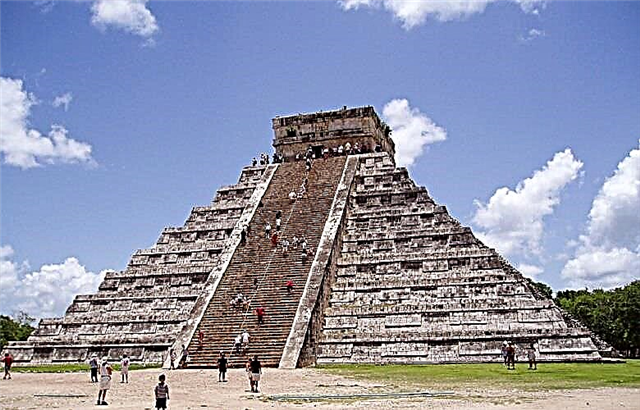
Anyone who goes to Chichén Itzá would like to climb to the top of the Temple of Kukulkán to live the incomparable experience of feeling on top of the main Mayan monument in the country and taking the most spectacular photos of the site and its surroundings.
However, tens of thousands of people going up and down the ancient steps every day have been taking their toll on the wear and tear of the valuable and ancient pavements and the weakening of the structure.
For the above reasons, the authorities responsible for the preservation of the Mexican archaeological heritage made the decision to restrict ascents to the top of the temple, a measure that discourages many tourists, but which is essential for the conservation of these treasures. From below, El Castillo is still just as beautiful.
21. What is the Sacred Cenote like and what is its importance?
It is a body of water, now about 60 meters in diameter and 13 meters deep, located about 300 meters north of the Temple of Kukulcán, which the Mayans used to make offerings.
Its importance was such that pilgrimages came to the cenote from places currently located in Guatemala.
In the cenote, Chaac, a Mayan god associated with water and rain, was worshiped. Since the beginning of the 20th century, the cenote has been dredged three times, extracting valuable human and animal pieces and remains.
22. What things of interest have been extracted from the cenote and where are they?
The first dredging of the Sacred Cenote was carried out in 1904 by an American archaeologist and diplomat named Edward Herbert Thompson, who had bought in 1893 the ranch on which Chichen Itza was located.
Herbert Thompson extracted a large amount of jade and onyx jewelry, as well as archaeological pieces and human and animal remains, which he transferred to his country.
After several decades of litigation, it was agreed to return to Mexico, first half of the heritage in 1970, and then another part in 2008. Then the Mexican government carried out two more dredging operations.
The extracted patrimony is mainly in the National Museum of Anthropology and History.
23. Is it true that the Sacred Cenote was a place of human sacrifice?
For a long time there was a legend that maidens offered to the gods were sacrificed in the Sacred Cenote.
Investigations have found that those killed were mainly children between the ages of 3 and 11, most of them thrown alive.
These rites were practiced in the Sacred Cenote to ask for rain from Chaac, resorting to human beings when the Mayans understood that animal sacrifices failed to persuade the god to send the water essential for life.
24. Is it true that under the Temple of Kukulkán there is another cenote?
Effectively. In August 2015, archaeologists and other Mexican experts confirmed at a press conference that the Pyramid of Kukulkán was built on a cenote.
The cenote was discovered by means of a 3D electronic tomography, which established that the body of water is 35 meters long on its longest side and is 20 meters deep.
The Castle is settled on a rocky layer 5 meters thick that separates it from the water.
25. What can you tell me about the Wall of Skulls at Chichén Itzá?
In pre-Hispanic culture, a Tzompantli was a public altar on which the heads of the sacrificed, often captured warriors, were displayed to honor the gods, thank them for victory in combat, and intimidate enemies.
At the Tzompantli or Wall of Skulls at Chichen Itza, the Mayans skewered the still bleeding heads, 4 at a time, on sharp sticks and decorated the surfaces with high-relief skulls.
26. What is the most relevant thing about El Caracol?
It is believed that this building was an astronomical observatory and is called El Caracol due to the spiral staircase inside the cylindrical tower.
It was built in the year 906 and in it the Mayans were marking the different events that took place, such as solstices, equinoxes, zenith steps, solar years, eclipses and transits of Venus.
In the structure you can see the marks with which the Mayans identified 20 of these events, out of a total of 29 astronomical events in which they were interested.
27. What can you tell me about the "sports complex"?
From the games that some Mesoamerican indigenous communities still play, it seems that the Mayan ball game was similar to racquetball, in which the ball should not touch the ground.
It is believed that it was a less bloody option than war to resolve disputes. In Chichén Itzá the court for the most impressive ball game discovered so far in Mesoamerica is preserved, including the stone rings, the spectator stands and the players' benches.
Its dimensions are great, measuring 168 meters long and 70 wide. There are other secondary courts.
28. What is the Temple of the Warriors like?
This building, which is located on the east side of the esplanade, has four bodies arranged in the form of a step and two rooms at the top.
It is 40 meters long and on the main facade, the lintel is supported by the images of two huge rattlesnakes.
At the entrance there is a sculpture of the god Chac Mool, which seems to confirm the links between the Mayans and the Toltecs, which can also be seen in the architectural style of the temple.
It has several vaulted rooms supported by colonnades and a group called the Group of 1,000 columns.
29. What is the Group of 1,000 columns?
The Temple of the Warriors is surrounded by a profusion of columns, an area that has been called the Group of 1,000 columns, although it is only 200.
The qualifier of the thousand is to give it a more majestic name, but either way, visitors get lost between the columns and the place is a must for a photo.
Although the colonnaded squares are normally associated with the Temple of the Warriors, another version indicates that they were another temple in their own right.
30. What is the interest of La Casa de las Monjas?
This building is of Puuc architectural style and has nothing to do with Mayan nuns. As it has a large number of rooms, the Spanish named it because they associated it with a Christian convent.
It is believed to have been the residence of a powerful man, perhaps the head of government or the high priest.
31. Why is a temple called the Bearded Man?
This temple called the Bearded Man or the Bearded Man, is named after a strange figure with a beard that appears among the rows of images painted inside.
This building was the first in Chichén Itzá in which the slope construction technique was used. At the top of the temple is the god Kukulkan on a jaguar throne, with a feathered serpent as a frame and guarded by 7 warriors.
32. Why is the Casa Colorada so called?
This house is part of a group of buildings located on an esplanade, between La Casa de las Monjas and El Osario, about 100 meters from the Temple of Kukulkán.
It has three entrances to the main hall and inside there are friezes with a reddish pigmentation.
33. What's in the House of the Deer?
Very little, since the building is demolished in more than 50% and only a complete room and some vestiges of what must have been the roof cresting remain.
According to tradition, inside this building was the painting of a deer on the stucco, now disappeared.
34. What can I see in the Tomb of the Great Priest?
This Mayan construction, also called El Osario, is very similar to El Castillo, with 9 staggered bodies, to the point that it looks like a replica on a smaller scale.
It is about 10 meters high and in the smaller body it has an ornate frieze with reliefs, including the god Chaac in the corners.
According to legend, underneath there is a natural tunnel several kilometers long that connects with another Mayan city, possibly Yaxuná.
35. What is the history of the Temple of the Tablets?
This Chichén Itzá temple, so called because of the sculpted panels on their bodies, presents a construction plan similar to that of the Temple of the Warriors, although on a much smaller scale, so it is assumed that it was a house reserved for Mayan combatants for their meetings and services. The figures show scenes from Mayan life and their rites and ceremonies.
36. How do I get to Chichén Itzá from Cancun by bus?
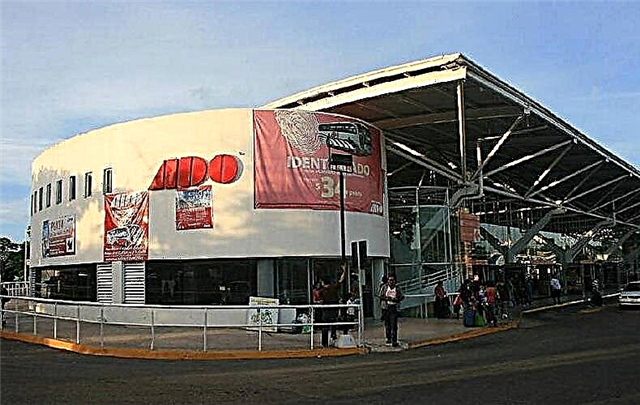
If you are on a maximum savings plan and want to go to Chichén Itzá economically and without having to buy a tour from an operator, the best option is to take a bus at the terminal located in the center of Cancun.
The units start to depart early in the morning and make the 190-kilometer journey in an approximate time of two and a half hours, depending on the season.
You must bear in mind that the earlier you leave, the more time you will have to enjoy the site and return the same day without the feeling of having missed seeing important things.
The buses stop briefly in the pretty town of Pisté, for travelers to stretch their legs, eat a snack and buy some crafts.
37. What if I want to go by plane from Cancun?
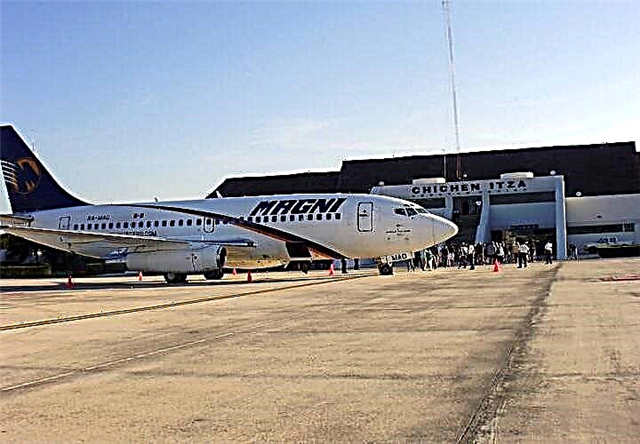
On the contrary, if budget is not your main concern, the most comfortable option to go to Chichén Itzá is to book a flight at the Cancun airport.
The plane has the advantage that leaving early in the morning, you will overtake everyone who is going by car or bus and avoid crowds to enter the archaeological site.
You can hire only air transportation or also include a tour with ground transportation, the entrance fee and a guide.
The Aero SAAB operator provides this service, including a visit to the archaeological site and the beautiful Il-Kil cenote, with the assistance of a guide in your language. The contact telephone number is 998 865 42 25 and they are open between 7 AM and 7:30 PM.
38. What if I want to rent a car in Cancun?
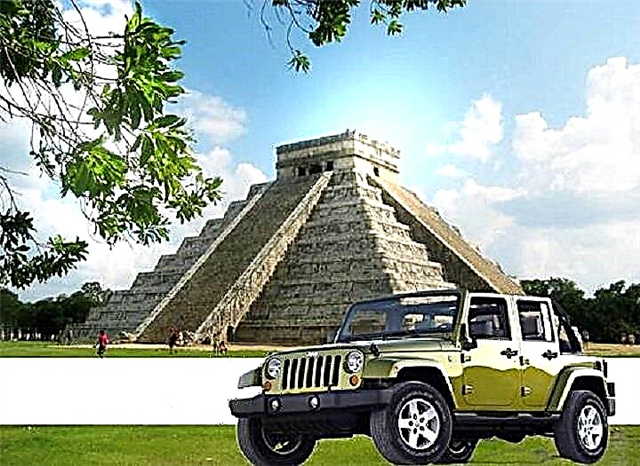
Another convenient way to go to Chichén Itzá, making all the desired stops along the way, is by renting a car in Cancun.
The road is kept in good condition, so driving to the site will not be a problem and you can get a discount if you reserve the car in advance.
The route to Chichén Itzá offers several attractions to get to know them in a relaxed way in a rented car, mainly beautiful cenotes and picturesque towns, such as Pisté.
In Cancun there are several serious car rental companies. One of them is México Car Rental, which you can contact on 01 998 111 3997 24 hours a day.
39. How do I get to Chichén Itzá from Mérida by bus?
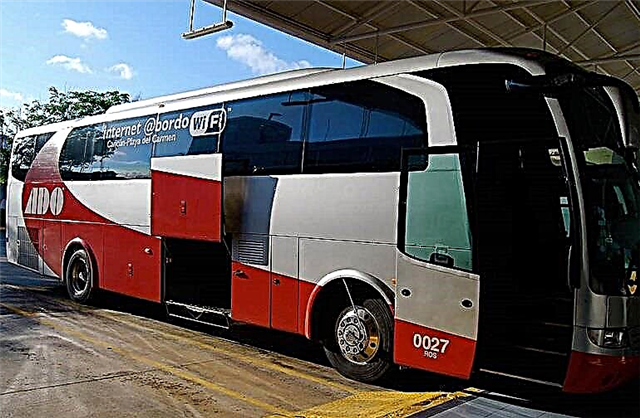
The ADO buses provide the transportation service to and from the site and have a website for you to make your reservations in advance.
Regularly, they start to leave at 6:30 AM, returning at 5:15 in the afternoon. Remember that the sun and heat can bother Chichén Itzá and that, depending on the season, there may be queues to buy tickets and enter the site. Early risers start with an advantage.
40. What are the best tours for Chichén Itzá?
There are several tour operators that offer tours to Chichén Itzá, both exclusively to the site and in combination with other destinations.
The best known operators are Viator, Cancun Adventure, Experiencias Xcaret, MéxicoDestinos and Rosa Tours.
Most of the tours depart from the main cities of the Riviera Maya and its surroundings, such as Cancun, Playa del Carmen and Tulum. They generally include transportation, access to the site, food, and other basic services.
The combined tours, apart from the site, go to the Ik Kil cenote, to the colonial city and Magic Town of Valladolid and to other places of interest on the Riviera.
If you want to read the complete guide to the best tours in Chichén Itzá click here.
41. Where is the Ik Kil cenote? Is it a good attraction?
Only 3 kilometers from Chichén Itzá and 35 minutes from the Magic Town of Valladolid, is this beautiful cenote that several operators include as a destination in the tours that go to the archaeological site.
Many people like to cool off in the cenote after a sweaty day among pyramids and pre-Hispanic temples.
You go down a stone staircase with small viewpoints to admire the body of water and the lush surrounding vegetation.
42. What are the attractions of Valladolid?
Valladolid is a Yucatecan city of a beautiful colonial style, with the category of Mexican Magic Town, which is located 42 kilometers from Chichén Itzá.
Among the most outstanding sites is the Church of San Gervasio, a 16th century temple rebuilt at the beginning of the 18th century, after the so-called Crime of the Mayors was committed in its enclosure.
Other places of great attraction are the Ex-convent of San Bernardino de Siena, the most imposing building in the city; the beautiful Calzada de los Frailes, the house of Los Venados and the San Roque Museum.
43. How was that Crime of the Mayors?
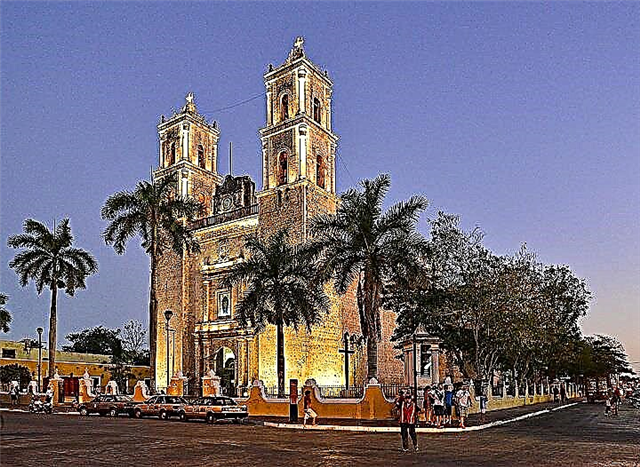
The Church of San Gervasio is a Catholic building located in front of the Central Plaza of Valladolid, with its main facade facing north, an unusual fact in Christian religious architecture, whose temples are always west facing.
The reason for this atypical constructive arrangement is a kind of permanent atonement for a crime committed in the religious compound more than 300 years ago, on the night of July 15, 1703.
That fateful night, the Yucatecan Valladolid Fernando Hipólito de Osorno and Pedro Gabriel Covarrubias were assassinated inside the temple by order of the mayors Ruiz de Ayuso and Fernando Tovar.
After the event, which became known as the Crime of the Mayors, the church was subjected to a remodeling that was also a form of spiritual cleansing as redress for the murders, and since then it has been looking north.
44. What is the interest of the former convent of San Bernardino de Siena?
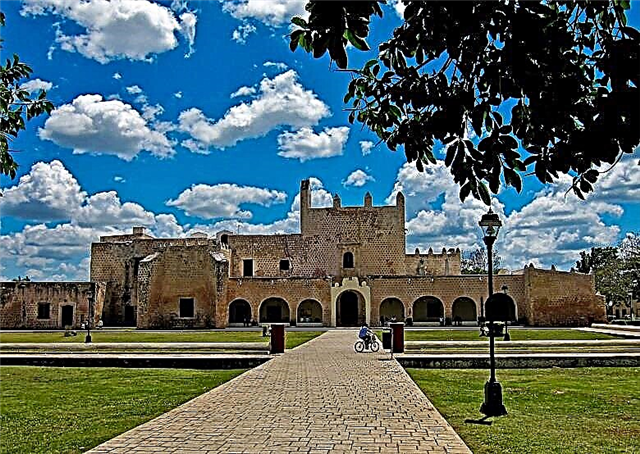
This Franciscan religious complex of Valladolid, with an imposing presence, was erected in the middle of the 16th century under the supervision of the friar and architect Juan de Mérida.
It is located in the Sisal neighborhood and is the main emblem of the viceregal architecture of Valladolid. Like many temples in the colony, it was conceived for both religious and defensive purposes and its walls up to 10 feet thick served as protection against a few indigenous attacks.
With its church-fortress air, on the conventual façade the portería with its semicircular arches stands out, while inside the main altarpiece, some religious sculptures and the original remains of some fresco paintings stand out.
45. Are there other religious buildings of interest in Valladolid?
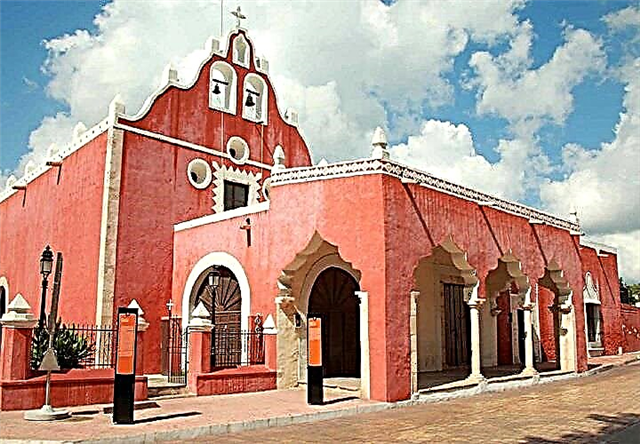
Other temples to know in Valladolid are those of Santa Lucía, San Juan and La Candelaria. The first, located in the neighborhood of the same name, is a sober construction from the early seventeenth century, with a belfry with three clearings.
The Church of San Juan has two slender twin towers crowned by pylons and is located opposite the Parque de San Juan. Inside the temple there is a Solomonic altarpiece decorated with plant details.
The Temple of Candelaria, located in the Valladolid neighborhood of the same name, is a complex made up of a church, a dressing room and a portal with Moorish arches. Inside, the vaulted ceiling, religious sculptures in niches and the carved wooden pulpit stand out.
46. What is the House of Deer?
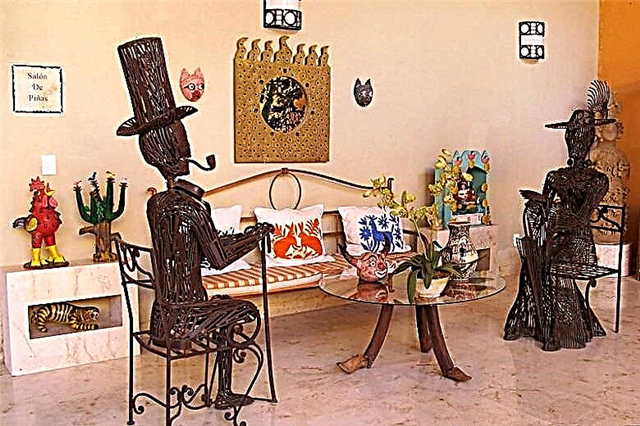
It is a large viceregal house in the historic center of Valladolid, whose owners, the American couple formed by John and Dorianne Venator, have dedicated a good part of their lives to collecting pieces of Mexican popular art.
In the 1700-square-meter manor house, more than 3,000 artisanal and artistic objects from all over Mexico are currently exhibited, being the largest private collection in the country in its field.
The Casa de los Venados opens at 10 AM and charges a modest entrance fee for maintenance, charity and presentation of cultural events.
47. What is the interest of the Calzada de los Frailes?
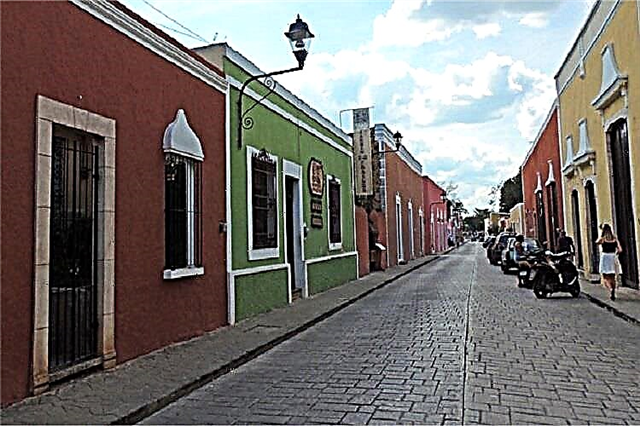
Calzada de los Frailes is a picturesque street in Valladolid with cobblestone pavement and flanked by colonial houses that are distinguished by the color of their typical white-edged facades.
The causeway dates from the founding of the city in the 16th century, when colonial urban planners built it to connect the San Bernardino de Siena convent with the residential area of the town.
The relaxed viceregal spirit of the beautiful Calzada de los Frailes is only altered by the cars that announce that we are in an enclave of the past but in the XXI century.
48. Are there other civil buildings to visit in Valladolid?
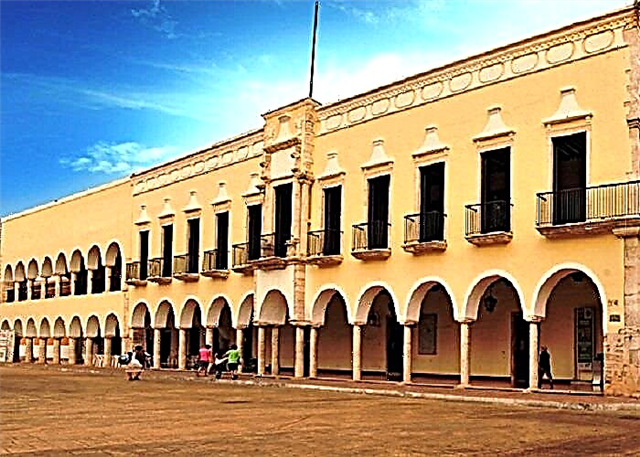
The Municipal Palace of Valladolid is a 16th century construction, modified in the 19th century and built in the image of the Royal House of Santo Domingo in Hispaniola.
The palace is distinguished by its extensive semi-circular arched portico with elegant stone columns. In the central balcony the double colonnade is in the Tuscan style and the openings are topped by dust covers. Inside, some oil paintings of the Mexican Revolution stand out.
Another Valladolid property with a long history is the Casa Cantón, located in the historic center and so called because it is the birthplace of the notable liberal leader and writer Delio Moreno Cantón.
Before belonging to the Cantons, the famous mansion was owned by Pedro Sainz de Baranda y Borreiro, a Mexican military man who fought in the Naval Battle of Trafalgar as a Spanish subject and later defeated the Spanish royalists in Veracruz in the course of the War of Independence from Mexico.
Previously, the current Casa Cantón had been the residence of the Procurator of the town of Valladolid, Don Roque Rosado.
49. What is exhibited in the San Roque Museum in Valladolid?
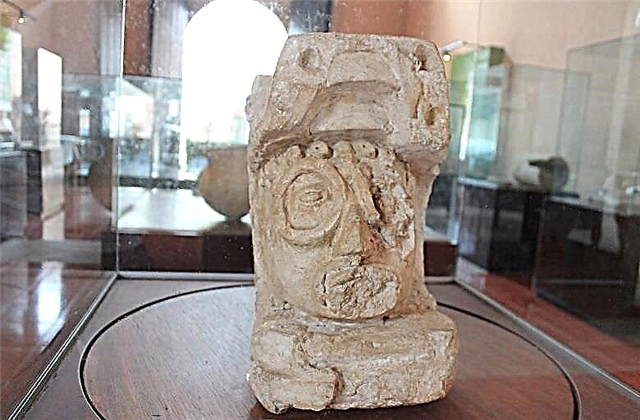
Before being restored in the 1980s and turned into the San Roque Museum, this building was first a religious complex made up of a temple and a cloister, and later it became the first hospital in the city of Valladolid.
Currently it is a museum of regional history, exhibiting pieces and documents of the Yucatecan and Valladolid cultural evolution.
Among the objects displayed, a serpent's head carved in stone stands out that was rescued at the nearby archaeological site of Ek Balam.
Access to the San Roque Museum is free and the institution opens its doors between 8 in the morning and 8 PM.
50. ¿Hay cenotes cerca de Valladolid?
Hay varios cenotes en las cercanías, entre los que destacan el Zací y el X’Kekén. El cenote Zací es un enorme cuerpo de agua cristalina, uno de los más grandes de Yucatán, que por mucho tiempo se utilizó como fuente de abastecimiento.
El X’Kekén, también llamado Dzitnup, es un precioso cenote de agua azul turquesa situado dentro de una caverna.
Bañarse en cualquiera de los dos cenotes es una delicia después de recorrer Chichén Itzá o Ek Balam.
51. ¿Qué es Ek Balam?
Es una zona arqueológica situada a 27 kilómetros al norte de la ciudad de Valladolid. Es uno de los emplazamientos más relevantes del periodo clásico tardío en Yucatán, a pesar de que fue descubierto recientemente.
Cuenta con una superficie de 15 Km2 en los que están repartidas más de 40 edificaciones, sobresaliendo La Acrópolis, el Palacio Oval, la Casa Blanca de la Lectura y Las Gemelas
52. ¿Cuáles son las principales características de Ek Balam?
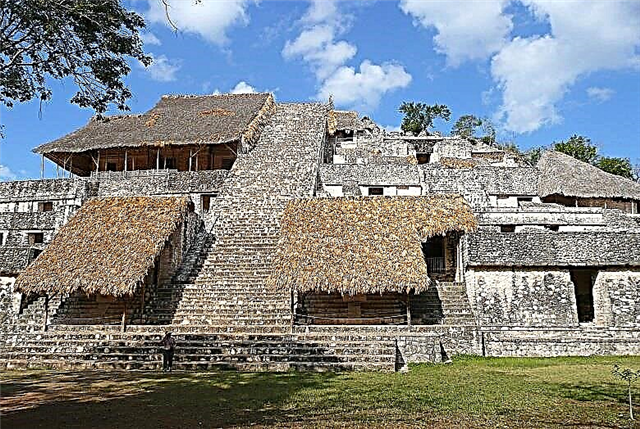
La edificación más amplia de Ek Balam es la llamada Acrópolis, una construcción situada en el lado norte del yacimiento, que tiene una altura de 29 metros.
Los frisos de escayola de la Acrópolis se han conservado espléndidamente, mostrando una figura monstruosa con forma de serpiente, con las fauces abiertas y unos buenos colmillos.También se distingue el decorado de un rey en su trono, rodeado de guerreros alados.
El Palacio Oval es un edificio de forma circular situado en el lado sur del sitio arqueológico, mientras que Las Gemelas son dos pirámides menores.
53. ¿Qué tan cerca de Valladolid está Ría Lagartos?
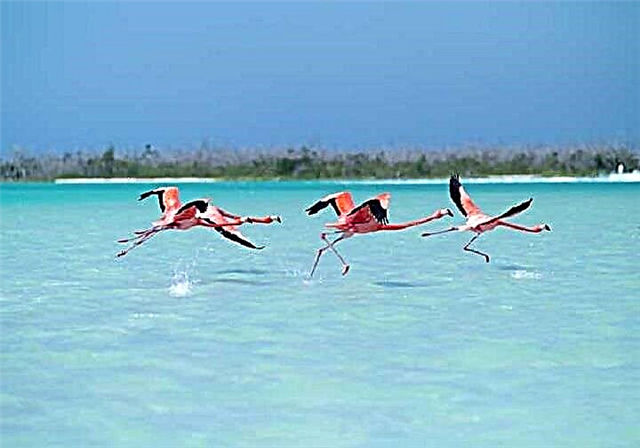
A poco más de 100 km de Valladolid, en dirección norte y frente al Mar Caribe, está situada la Reserva de Biósfera de Ría Lagartos.
Es un área protegida en la que viven más de 300 especies de aves, medio centenar de mamíferas y casi 100 de reptiles, varias endémicas del ecosistema y unas cuantas en riesgo de extinción.
Una de las especies más hermosas de la ría es el flamenco rosado mexicano, que colorea el horizonte con su bello color rosa y una de las principales razones para que la reserva fuera seleccionada en 1986 como Sitio Ramsar, denominación que reciben los acuíferos de relevancia mundial para la biodiversidad.
54. ¿Hay algunos atractivos en Pisté?
Pisté, la cabecera municipal de Tinum, es un pueblo de unos 4.500 habitantes situado a menos de 3 kilómetros de Chichén Itzá.
La localidad cuenta con algunos atractivos arquitectónicos, como el templo de San Antonio de Padua y la capilla de Jesús, ambas edificaciones del siglo XVII.
Otra atracción cercana a Pisté (y a Chichén Itzá) son las Grutas de Balankanché, unas cavernas con iluminación artificial y sonido para explicar su importancia para la cultura maya.
En el recorrido por las grutas podrás admirar diversas formaciones rocosas, como estalagmitas, estalactitas y columnas.
55. ¿Dónde puedo adquirir algún suvenir?
En Pisté hay un establecimiento de artesanías Itzaes en el que se pueden adquirir piezas de cerámica, tallas de madera, piedra, hueso y otros materiales; piezas de ropa, objetos de plata y otros productos.
Como en muchos negocios mexicanos, hay que hacer algo de regateo para conseguir el mejor precio.
En Valladolid también hay algunas tiendas, como Casa Rivero, que ofrece alfombras, tapices y figuras de cerámica.
56. ¿Cómo es el espectáculo Chichén Itzá Luz y Sonido?
En un yacimiento arqueológico la vida nocturna no es muy activa, pero en Chichén Itzé organizan un espectáculo nocturno muy concurrido, llamado Chichén Itzá Luz y Sonido.
En el evento que comienza al anochecer, las edificaciones arqueológicas se van iluminando en diferentes formas y colores mientras un narrador va leyendo pasajes del Popol Vuh, el libro sagrado de los mayas.
Los turistas que no entienden español pueden rentar unos audífonos especiales para escuchar en otros idiomas la narración de la creación del hombre según la mitología maya.
57. ¿Cuáles son los principales hoteles cercanos?
Cerca de Chichén Itzá hay varios hoteles en los que puedes encontrar algunas comodidades modernas que no tuvieron los mayas, como internet, aunque sin duda las albercas naturales que son los cenotes superan a las artificiales de los alojamientos.
El Hotel & Bungalows Mayaland es señalado por su comodidad, deliciosa comida y amabilidad de su personal.
La Hacienda Chichén es de campestre tranquilidad y ofrece la posibilidad de admirar algunas especies de aves de la región.
The Lodge at Chichén Itzá destaca por la belleza de sus habitaciones y por los sabrosos platillos yucatecos que preparan.
58. ¿Algunas otras opciones de alojamiento?
El Hotel Oka’an parece un oasis tropical en medio de la densa vegetación que lo circunda. Los clientes señalan su excelente servicio y la belleza de los alrededores, incluyendo un pequeño lago.
Hotel Dolores Alba Chichen es un establecimiento de cómodas cabañas que se encuentra frente al cenote Ik Kil y cuenta también con alberca.
Hotel Grand Mayab es un bonito hotel que está localizado en el Km. 140 de la carretera federal Valladolid – Chichén Itzá. Cuenta con una cálida atención, limpias habitaciones y una cocina sencilla y sabrosa.
Otras opciones de alojamiento cercanas al yacimiento arqueológico son La Casa de las Lunas, Pirámide Inn y Hotel Chichén Itzá.
59. ¿Y si quiero hospedarme en Valladolid?
La gente que prefiere hospedarse en Valladolid para desde allí ir a conocer Chichén Itzá, cuenta con varias opciones de alojamiento a precios convenientes.
Casa Marlene es un pequeño hotel situado en la Calle 39, muy elogiado por sus clientes por su impecable limpieza y excelente servicio.
Hotel Posada San Juan funciona en una acogedora edificación colonial de la Calle 40 de Valladolid. Sus habitaciones son amplias y aparte de una cómoda cama, cuentan con el toque tradicional de una hamaca.
El Hotel Colonial La Aurora, en la Calle 42, también hace honor a la denominación de «ciudad colonial» de Valladolid. Cuenta con una alberca central y otra más pequeña, y sus habitaciones son grandes, limpias y confortables.
Otras opciones de alojamiento en el Pueblo Mágico de Valladolid son Casa Tía Macha, Hotel Candelaria y Hotel Quinta Marciala.
60. ¿Dónde puedo ir a comer en Valladolid?
Yerbabuena del Sisal Restaurante, en la Calle 54A, es reconocido por sus platillos vegetarianos, particularmente la hamburguesa, e igualmente te sirven una buena carne; además de contar con un bonito jardín y ambientación mexicana.
El Mesón del Marqués, en la Calle 39, cuenta con una deliciosa comida típica y está agradablemente decorado con obras de arte y artesanías.
La Casona de Valladolid, en la Calle 41, es un restaurante que a la vez es un conjunto arquitectónico, ya que incluye una pequeña capilla. Ofrecen comida mexicana e internacional.
Si quieres taquear, puedes ir a MAQtacos, situado en la Calle 40; y si te apetece comida italiana, Casa Italia, en la Calle 35, es la mejor opción para una buena pasta o una deliciosa pizza.
61. ¿Cuánto cuesta el acceso a Chichén Itzá?
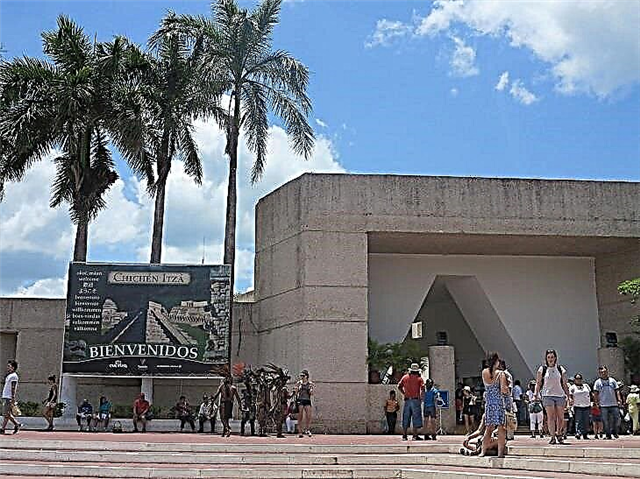
Para ingresar a Chichén Itzá hay que pagar dos precios: uno cobrado por el Instituto Nacional de Antropología e Historia (INAH), cuyo monto general es de 70 MXN y otro fijado por el gobierno del estado de Yucatán, a través de CULTUR, que depende de la nacionalidad.
Las personas de nacionalidad mexicana deben abonar a CULTUR 54 MXN, mientras que los extranjeros pagan 168 MXN.
En total, el acceso cuesta 124 MXN a los mexicanos y 238 MXN a los extranjeros. El comprobante de pago al gobierno yucateco es una cintilla colocada en la muñeca, mientras que el del INAH es un ticket de color verde. Debes asegurarte de hacer los dos pagos, porque los inspectores realizan verificaciones dentro del yacimiento.
Adicionalmente, si deseas utilizar una cámara de video personal, debes abonar 45 MXN y si vas en auto, hay que pagar la tarifa de estacionamiento vigente.
El espectáculo nocturno de luces tiene un precio de 450 MXN de lunes a sábado y de 220 MXN los días domingo.
62. ¿Hay alguna tarifa preferencial?
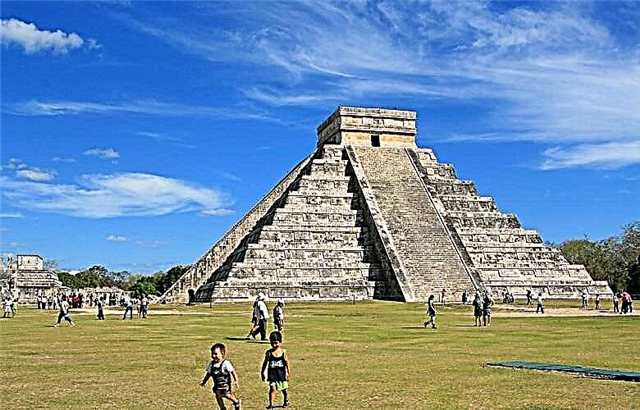
El acceso a la zona arqueológica es gratuito todos los días para menores de 13 años, estudiantes, maestros y adultos mayores con credenciales vigentes.
Adicionalmente, los días domingo son de acceso gratuito al yacimiento para los ciudadanos mexicanos y los extranjeros residentes.
63. ¿Cuál es el horario de Chichén Itzá?
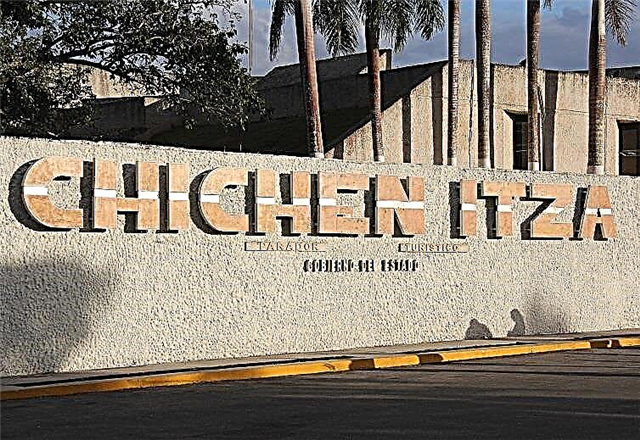
El horario general de visita del sitio arqueológico es entre 8 de la mañana y 5 de la tarde, aunque los monumentos más lejanos deben ser abandonados a las 4:30 PM. Las taquillas y el ingreso de personas se cierran a las 4 PM.
A la hora de la apertura y en temporada alta pueden formarse filas, por lo que se ruega a los visitantes mantener el orden y atender todos los requerimientos del personal para una mayor comodidad.
Igualmente, debe tenerse presente que se trata de áreas sensibles y que el adecuado comportamiento de los visitantes ayuda a la preservación del sitio.
64. ¿Por qué Chichén Itzá fue declarada «Maravilla del Mundo»?
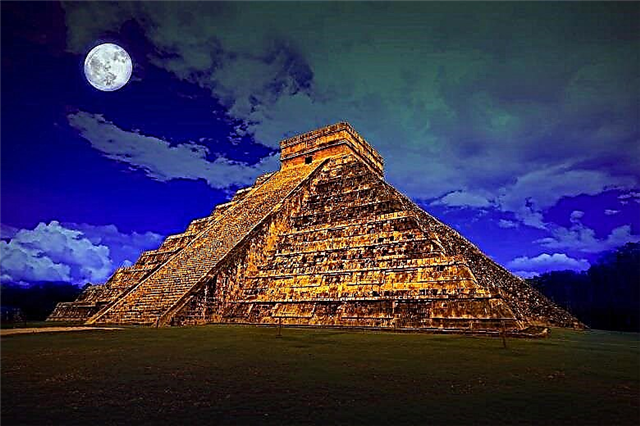
Las Siete Maravillas del Mundo Antiguo tienen el problema de que todas, a excepción de la Gran Pirámide de Guiza, ya desaparecieron.
Por lo anterior, en 2011 se eligieron las «Nuevas siete maravillas del mundo moderno» haciendo la selección entre sitios de gran belleza e importancia histórica, a condición de que se mantuvieran en pie.
La selección fue una iniciativa privada en la que votaron por internet más de 100 millones de personas y la ceremonia para hacer el anuncio fue vista por 1.600 millones de televidentes.
Tras una larga lista de candidatas, fueron escogidas 76 semifinalistas y 12 finalistas, entre las cuales se seleccionaron las nuevas 7 maravillas.
Las ganadoras fueron: Chichén Itzá, el Coliseo de Roma, la estatua del Cristo Redentor de Río de Janeiro, la Gran Muralla China, Machu Picchu, el enclave arqueológico jordano de Petra y el Taj Mahal de India.
65. ¿Cuántos turistas visitan Chichén Itzá al año?
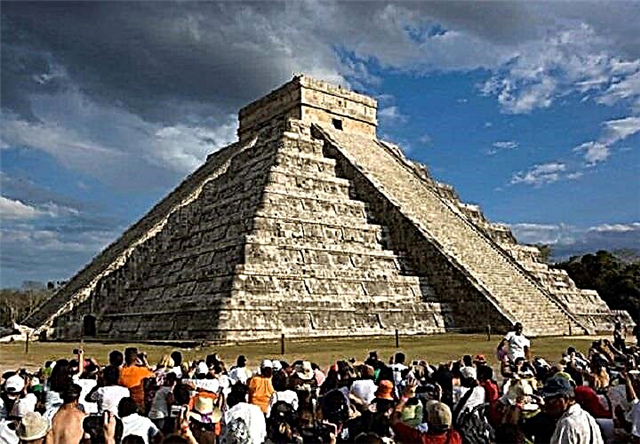
Chichén Itzá es el atractivo turístico más frecuentado de Yucatán y el segundo sitio arqueológico mexicano más visitado, después de Teotihuacán, estando este favorecido por la cercanía con la Ciudad de México.
Según el Sistema Institucional de Estadísticas de Visitantes, a Chichén Itzá fueron en el año 2000 un total de 1.140.988 personas.
La cifra fue creciendo y en el año 2010 se ubicó en 1.404.324 visitantes. La inclusión de Chichén Itzá en la lista de las «Nuevas siete maravillas del mundo moderno» tuvo un impacto decisivo en la afluencia de público, situándose actualmente en más de 2,1 millones de visitantes, equivalente a más de 5.700 personas/día.
66. ¿Cuáles son las opiniones de los visitantes respecto a Chichén Itzá?
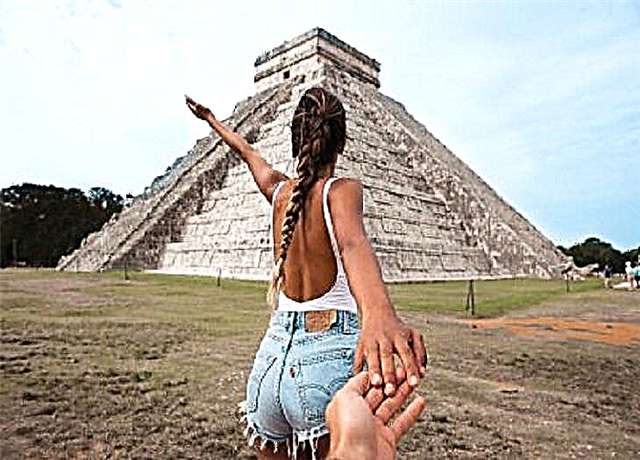
Al 22 de agosto de 2017, un total de 19.467 personas visitantes de Chichén Itzá habían registrado su opinión sobre el sitio arqueológico en el portal de viajes tripadvisor. Un 71 % de estas opiniones califican el lugar como Excelente y un 22 % como Muy Bueno. Algunas de las opiniones registradas son las siguientes:
«Es un lugar histórico, muy bonito y una de las postales más emblemáticas en una visita a Cancún; si es posible decidir el día que van les recomiendo elegir un día nublado, además de conseguir un tour que hace el paseo más llevadero» Fernanda M.
«Impactantes estructuras de la vieja ciudad. Bien cuidados los caminos para poder pasear. Nosotros compramos la entrada que te venden apenas bajas de la carretera, que sale un poco mas pero ya incluye la comida, estacionamiento privado y un pase al cenote que está cerca» romandp05, Argentina.
«Es una visita obligada a pesar del intenso calor y de cientos o miles de personas tratando de venderte algún recuerdo ….. Lleva ropa cómoda y toma mucho liquido. Vale la pena» federaraya, Argentina.
67. ¿Qué opinan los turistas que han ido a Valladolid?
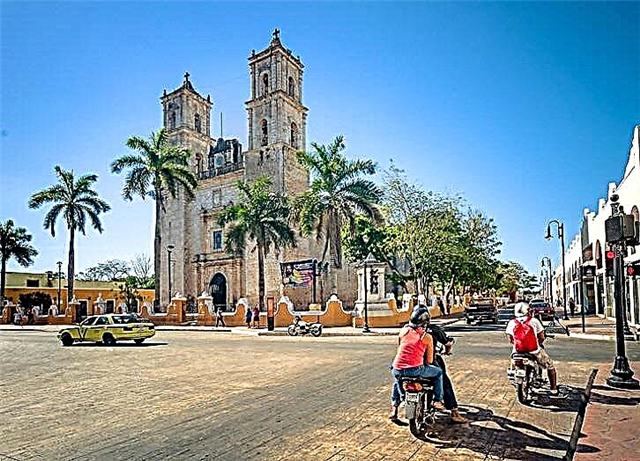
Las opiniones sobre los sitios de interés de la ciudad de Valladolid registradas en Tripadvisor también se encuentran mayoritariamente entre Muy Bueno y Excelente. Por ejemplo:
Sobre el ex convento de San Bernardino de Siena:
«Por las noches proyectan un espectáculo de luz y sonido sobre los muros de este convento; es gratuito y al aire libre. Interesante para entender mejor la historia de esta bonita ciudad» neffer999.
Sobre la Casa de los Venados:
«Excelente museo en el centro histórico de la ciudad …. Se combinan el arte y la cultura de innumerables pueblos mexicanos. Visítalo y mucho conocerás» Santiago A.
Sobre el Cenote Zací:
«Estando en Valladolid aprovechamos para visitar este cenote que es muy bonito y muy grande, realmente ofrece una vista espectacular» Fabián_Terr.
Esperamos que esta guía de Chichén Itzá te haya proporcionado toda la información necesaria para que conozcas y disfrutes a plenitud de uno de los yacimientos arqueológicos más importantes de México, así como de los encantadores cenotes y demás atractivos de esa zona yucateca. Nos vemos en una próxima oportunidad.

